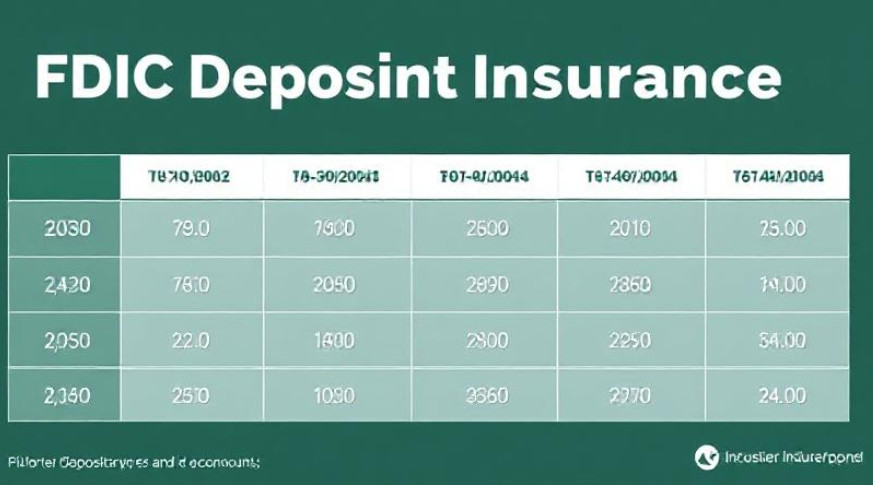Embarking on a relocation journey is a significant endeavor, especially when faced with deadlines such as the first day at a new job or the commencement of the school year. The decision-making process is swift and demands numerous choices, leading to moments of second-guessing and uncertainty.
One crucial decision you certainly don’t want to second-guess is the location you choose to relocate to. Whether you are a location-independent professional seeking the best places to work remotely or someone looking for the perfect community within commuting distance of your job, this decision will shape your life for years to come.
Factors to Consider When Determining Your Residence
This decision involves numerous considerations, with more than a dozen factors coming into play. While some factors like affordability and employment opportunities are evident and universally applicable, others such as food choices and climate may seem less critical but can significantly impact your quality of life and overall well-being in the long run.
Pro Tip: If your job allows remote work, consider companies like Remote Year that assist in setting up your living space, workspace, and unique experiences within your chosen country.
1. Affordability: Managing Your Finances
• Wealth is a relative concept, with different individuals associating it either with financial security or quality of life. However, most people prefer having more money to spend or save. Affordability, arguably the most critical factor for movers, encompasses the total cost of living, including housing, utilities, groceries, transportation, durable goods, and healthcare.
• Minor changes in the cost of living can add up significantly. Utilize tools like BestPlaces’ cost of living calculator to estimate how far your salary might go in a new location.
2. Tax Considerations: Trimming Your Burden
• While it’s impossible to escape taxes entirely, choosing the right location can help reduce your overall tax burden. Some states, like Alaska, Delaware, Montana, New Hampshire, and Oregon, do not charge sales taxes. Additionally, nine states waive income taxes on most or all sources of income.
• Beyond sales and income taxes, consider property taxes, school taxes, gasoline taxes, and business taxes. Explore the Tax Foundation’s state-local tax burden report to understand the impact of various taxes on your bottom line.
• The latest report, using data from fiscal year 2022, identifies New York State as the highest-tax jurisdiction in the United States, while Alaska has the lowest state-local tax burden.
3. Job Market: Evaluating Employment Opportunities
• Employment opportunities remain a crucial factor in relocation decisions, although location-independent work is becoming increasingly prevalent. Digital nomads can earn a living from anywhere with a serviceable workspace and reliable internet connection.
• Research job markets in different areas, focusing on quality employment opportunities within your industry. Consider income levels, as workers tend to earn more in places where the cost of living is high or competition for talent is fierce.
• For instance, a marketing manager in San Diego, California, might earn 30% more than their counterpart in Salt Lake City, Utah. However, housing and gas prices could offset the difference.
• It’s advisable to secure a job before relocating to a new area.
These are the initial considerations in a comprehensive guide to selecting your ideal living space. The subsequent factors will be explored in detail in the following sections.
4. Real Estate Landscape: Navigating Home Values
Understanding the dynamics of a new city’s real estate market is imperative as home values constantly fluctuate. To make informed decisions, research current home prices, short-term price trends, and the duration homes typically stay on the market. Evaluate whether homes sell above or below asking price and forecast long-term value trends.
• Market Research Tools: Utilize websites such as Zillow, Trulia, and Redfin to grasp the local real estate market. For a more comprehensive approach, consider a paid subscription to NeighborhoodScout, especially if you plan to invest in local real estate for passive income.
• Rent Considerations: Even if you don’t plan to purchase a home immediately, research prevailing rent prices before moving. This ensures finding an affordable place or avoiding a move to a city beyond your budget.
• Building Equity: In areas with buyer’s markets, where the ratio of rents to home values is low, you can save for a down payment more efficiently. This allows you to build equity in your new home more rapidly.
5. Safety First: Analyzing Crime Rates
Living in a high-crime area is undesirable, but achieving utopia where crime never happens is unrealistic. Use municipal or state resources to delve into crime statistics for cities, towns, or neighborhoods under consideration.
• Data Resources: Agencies like the New York City Police Department provide comprehensive databases of crime reports, offering insights into crime rates and trends. While private resources like City-Data can be helpful, they may not always be reliable.
• Long-Term Stability: Recognize that an area’s safety today doesn’t guarantee future safety. Consider the long-term stability of a neighborhood as it can be a decisive factor in ensuring your ongoing safety.
• Development Trajectory: Evaluate the development trajectory of potential locations. While gentrification has downsides, such as displacement, it often correlates with lower violent crime rates, as suggested by data from the U.S. Department of Housing and Urban Development.
6. Proximity to Loved Ones: Balancing Distance
Valuing time spent with family and close friends may influence your decision on how far to move. Long-distance drives or flights for reunions can be time-consuming and strain tight budgets.
• Alternative Options: For a change of pace without straining your budget, consider nearby college or vacation towns with strong, diverse local economies.
7. Climate Comfort: Weathering the Decision
Climate is a critical quality-of-life factor, influencing physical comfort, mental health, hobbies, and lifestyle choices. Choose a location that aligns with your climate preferences and supports your preferred activities.
• Winter vs. Summer: If you enjoy winter sports, consider locations like Colorado or Vermont. Conversely, if beaches and warm climates appeal to you, the Sun Belt might be the ideal choice.
• Economic Impact: Recognize that climate not only affects personal preferences but also shapes local economies, influencing employment and relocation decisions.
8. Educational Considerations: Valuing Quality Schools
For parents and even those without children, the local education system is a crucial consideration. Home values tend to rise faster in areas with good schools, and the trend is more pronounced in the best school districts.
• Research Tools: Utilize nonprofit websites like GreatSchools and SchoolDigger to assess school quality in potential cities, towns, or neighborhoods.
• Considerations for Families: Some families invest in private school tuition or leverage school choice programs. However, the realistic option for many lower-income families is enrollment in local public schools.
• Personal Consideration: If you don’t have children or plan to move again, you might find better housing bargains in lower-quality school districts. Consider your personal circumstances when evaluating educational factors.
9. Cultural Alignment: Choosing Your Lifestyle
Consider your cultural preferences when deciding where to live. Big cities offer world-class amenities such as museums, theaters, music venues, and diverse culinary options. On the other hand, outdoor enthusiasts might prefer spacious, nature-centric areas for activities like hunting and camping.
• Versatile Living: Semi-rural exurban communities near major metro areas provide a mix of housing styles at affordable prices. These areas offer a balance of large-lot estates, traditional suburbs, and higher-density housing, often with proximity to urban amenities.
• Diverse Preferences: Urban, suburban, exurban, and rural communities each have unique characteristics influenced by their demographic and cultural makeup. Consider factors like ethnicity, culture, or religion, as some individuals prefer living among communities that share their background.
10. Commute Considerations: Balancing Time and Transportation
Despite the rise of remote work, suburban and exurban growth contributes to increased commute times. Evaluate commute duration and traffic conditions, especially in high-cost coastal metropolises where extreme commuting is common.
• Public Transportation: In major metro areas with good public transit, long commutes may be less stressful. Assess the availability and reliability of public transportation options in potential neighborhoods.
• Walkability: Use tools like Walk Score to gauge neighborhood walkability, indicating how easy it is to get around without a car. This is especially useful if you prefer not to drive daily.
11. Culinary Landscape: Gastronomic Preferences
Consider your access to food options, especially if you don’t maintain a home garden. Rural areas might lack reliable access to fresh produce, necessitating longer trips to grocery stores.
• Grocery Delivery: In thinly populated regions, grocery delivery services may be unavailable due to low demand. Evaluate the availability of fresh produce and grocery delivery based on your culinary preferences.
12. Size of Town or City: Personal Preferences
Your preference for anonymity or a close-knit community influences the ideal town or city size for you. Big cities offer anonymity, while small towns provide familiarity. Suburban communities may offer a blend of both.
• Changing Preferences: Recognize that your preferences may change with age. The appeal of a close-knit small town might grow stronger as you age, outweighing the allure of a larger, more sprawling community.
13. Healthcare Access: Prioritizing Well-Being
Access to affordable, high-quality healthcare is essential, especially for families, those nearing retirement, or individuals with chronic health conditions. Major metropolitan areas generally offer more healthcare choices.
• Research: Evaluate healthcare options in potential locations, considering the presence of major research universities or hospitals. Some smaller towns with these facilities can provide excellent healthcare access.
14. Airport Proximity: Travel Convenience
For frequent travelers, proximity to a major airport is crucial. Consider the accessibility, reliability, and expenses associated with regional airports versus major hubs.
• Travel Logistics: Evaluate the time and cost involved in reaching the airport from your potential residence. Factor in transportation options and parking costs, especially if you live in exurban or rural areas farther from the airport.
Final Thoughts: Making the Right Move
Moving is a complex task, and choosing the right place sets the tone for the entire process. By considering factors such as cultural alignment, commute, culinary preferences, community size, healthcare access, and airport proximity, you can make an informed decision that aligns with your lifestyle and priorities. Taking the time to assess these factors beforehand can reduce stress and ensure a smoother transition to your new home.







